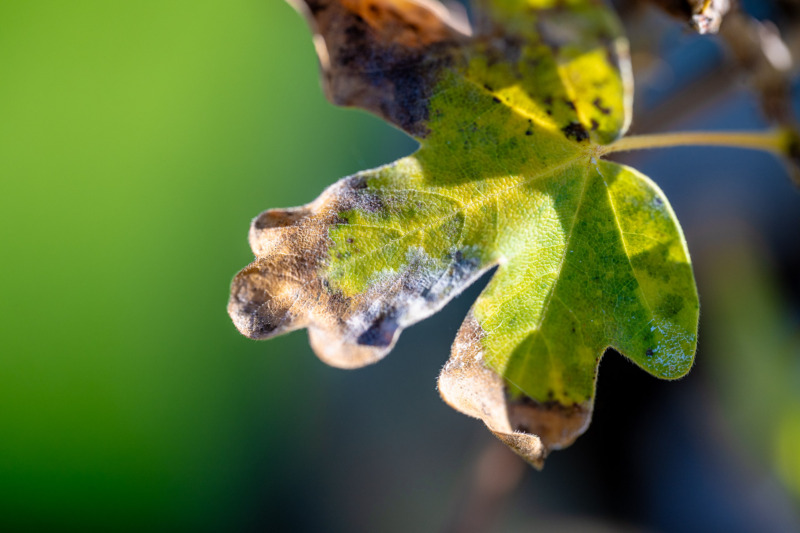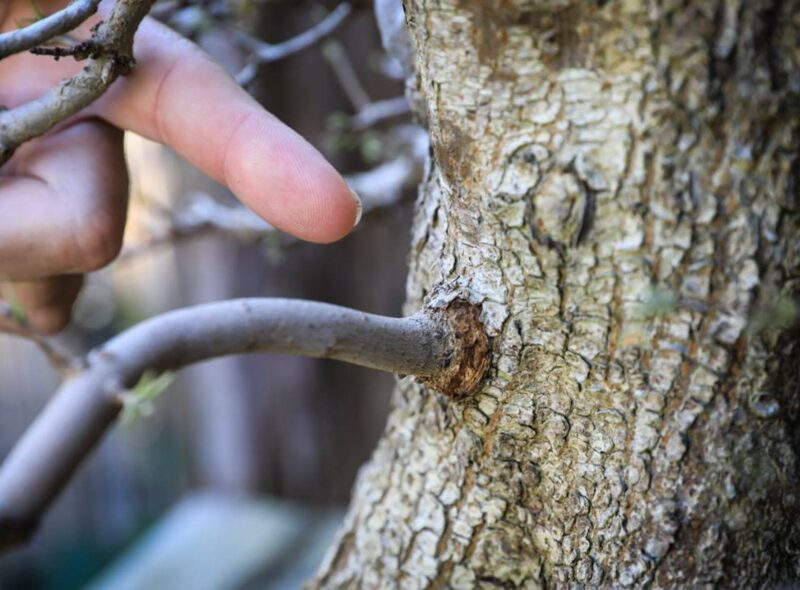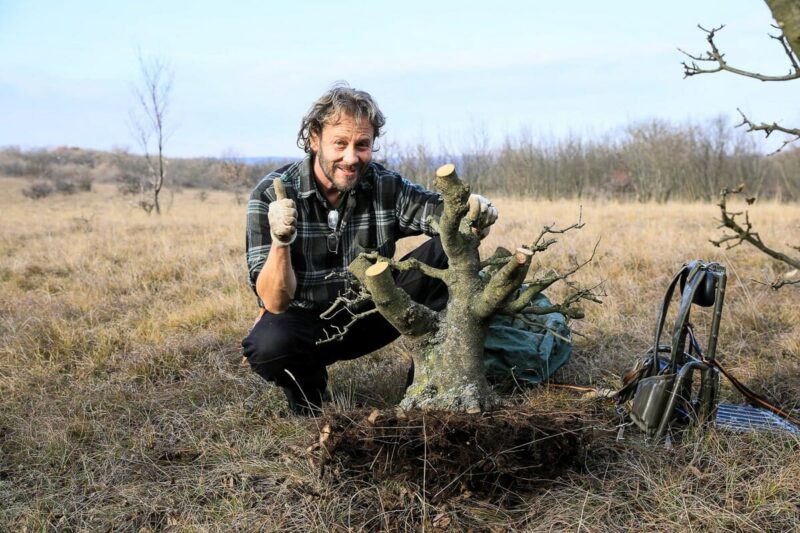Categories
Tags

The word “TCHING” (Jing) means LANDSCAPE in the Chinese language. This gives rise to the term “PUNJING” which applies to STONE and WATER. A Chinese person speaks of a “PUNSAI” or “PENSAI” when only one tree or a group of trees is planted in a SHELL or TABLET. The word “PUNSAI” later developed into the Japanese word “BONSAI”. The spelling is the same in both Chinese and Japanese characters and translates as “TREE or LANDSCAPE in a TRAY”. In modern Chinese usage, “PENJING” is used as a collective term for miniature trees in bowls as well as miniature landscapes.
shumu penjingTree penjin. Here is a tree or a small group in a bowl.
shanshui penjinglandscape penjin. The tree plays a subordinate role, the important thing is the depiction of the miniature landscape, made of naturally shaped stones, which are decorated with plants or moss.
shuihan penjingwater and land penjin. Sand is used here to depict a watercourse, pond or lake surface. Rocky landscapes are also frequently stand on flat trays that are filled with water. Another form is the miniature living landscapes of the Vietnamese Hòn Non Bộ. There is an independent tradition, also known as bonsai, in Indonesia, for example in Bali.
There are different statements and stories about how the bonsai cult came about. The only thing that everyone is pretty sure of is that it all began around 2300 years ago, i.e. around 300 BC, but perhaps much earlier.
In Asia, a whole range of plant species were cultivated in pots to provide the soldiers on the move with sufficient fresh fruit and vegetables. For many centuries, the Far East was a patchwork of small kingdoms with different cultures and traditions, whose armies were constantly on war campaigns to redraw the borders
The cultivation of potted plants probably arose for practical reasons. Ayurvedic medicine requires various tropical plants and trees as medicinal plants. As the population spread northwards, where these no longer grew, these plants were cultivated in pots.
The first trees in pots were brought to China with Ayurvedic medicine. Over a long period of time, bonsais developed from this.
Bonsai was first documented in ancient Chinese picture scrolls and vase paintings as well as wall paintings. In the early Han dynasty, artificial landscapes with lakes, islands and bizarre rock formations were already being recreated in the palace gardens of the emperors, and the culture of potted plants was already well known. According to mythology, the magician Jiang-Feng lived in this period, who had the ability to conjure up entire landscapes with rocks, water, trees, animals and people in miniature on a tray. The art of penjing apparently originated during this time – even though some of the trees were over two meters tall and were kept in large bowls in the garden.
In the Tang Dynasty, the oldest known depiction of a penjing, a miniature landscape with small trees and rocks, can be found in the burial chambers of Prince Zhang Huai. This era was considered to be very artistic, with poets and painters paying particular attention to nature.
The Song Dynasty was the first heyday of the Penjing culture. Gnarled trees, especially pine trees, which were grown from tree roots, were now particularly popular. At the same time, the art of suiseki developed, which involved placing beautifully shaped stones on water-filled trays. This evokes impressions of coastlines or dramatic rocky landscapes in the high mountains. The book Yunlin Shipu lists 116 types of stone that can be used for design.
Miniature penjing became particularly popular in the Yuan Dynasty. He-Nian, a poet, wrote a series of poems about the “tiny” penjing of the monk Yun Shangren, from which the quote (“to see the great in the small at the same time”) became an important guiding principle in the centuries that followed.
Since the end of the Ming Dynasty, individual trees and bowl landscapes have been referred to as penjing for the first time. A number of books were also written during this period. The very popular Chinese landscape painting gave new impetus to penjing art at that time. They were referred to as “three-dimensional paintings” or “living sculptures” and were usually around half a meter in size, so that they could fit on a small tea table – and were considered particularly valuable.
In the Qing dynasty, the art of bonsai was adopted by the country’s noble families, who often employed their own penjing gardener. Annual competitions were held in Suzhou to determine the most beautiful trees in the country. The different regions of the country developed different styles:
The different cultures and traditions in this region have produced countless, equally different tree pruning techniques. For example, Japanese bonsai art differs from Chinese bonsai art, which differs from Korean, Thai and the bonsai art of other Far Eastern countries.
It is assumed that Buddhist monks brought the BONSAI to Japan. For the Buddhist monks, the bonsai embodied a “green stairway leading to heaven”, i.e. a religious object. The bonsai style developed here in parallel with China.
During the Yuan Dynasty, it was customary in Japan for ministers and merchants to bring gifts from China in the form of bonsai.
A certain Chu Shun-sui, a Chinese official who fled to Japan to escape Manchu rule, brought with him all the knowledge he had collected in specialist literature on bonsai. This specialist knowledge of bonsai has decisively promoted bonsai culture in Japan.
At this time, Japan developed its own bonsai culture, which was initially reserved for the nobility and clergy. An imperial decree forbade non-noble people to keep bonsai under penalty of death.
The cultivation of trees and plants in pots experienced a strong upswing. The model at the time was the Shogun Tokugawa Iemitsu. Plants with strikingly mutated leaves and flowers that did not occur in nature were collected for this purpose. Many trees from this period look unnatural.
With the end of the Edo period, the shogunate began to topple. The Bunjin (translation: literati) founded organizations and held demonstrations from Osaka and Kyoto. They also turned against the art of bonsai and came up with a new style. In this style, native species (e.g. maple or pine) are used for the design. Styles such as Chokkan or Kengai were already coined in the literature of the time. This style was very popular with scholars in Osaka and in the imperial city of Kyoto. The period was one of isolation. Traveling to China was punishable by death.
At the beginning of the Meiji period, Japan’s upper classes discovered a love of bonsai. The design ideal, the form of naturally grown trees, receded into the background. As bonsai were now exhibited in teahouses, the lower classes also found access to this art. Exhibitions were held again after the end of the war against Russia and China, and bonsai art regained its importance. The model was the beauty of nature; bonsai artworks were supposed to be more natural than nature. With the end of the Meiji period, the design ideal that is still known today emerged.
It was not until the end of the 19th century that bonsai became a common pastime for ordinary people in Japan. Most bonsai in Japanese households were not purchased for aesthetic reasons, but were given as lucky charms on various occasions, for New Year, weddings or to wish someone a long life and prosperity. A bonsai trade did not develop in Japan until the end of the 18th century. In the 19th century, however, there were already specialized bonsai nurseries, at least for the species that were mainly in demand. Their products were not works of art, but standardized nursery stock.
Bonsai was first introduced to Western countries by the Japanese at the World Exhibition in Paris in 1878 and in London in 1909. The spread of these exotic trees stalled at the time as no information was available about them. The English, familiar with exotic plants through their colonial period, showed more interest. The first bonsai clubs in Europe were also founded in England.
Another milestone, albeit a negative one, for the spread of bonsai was the Second World War. The temporary occupation of Japan by the Americans brought them into contact with bonsai. As a result, bonsai reached the USA and England where they quickly found their fans. However, strict import regulations for goods forced the Americans to import the bonsai masters instead of bonsai.
About 40 years ago, bonsai arrived in Holland and Germany, from where they continued their journey south. Paul Lesniewicz published the first useful bonsai book in German, which was followed by dozens more in the years that followed. Ulrich Dietiker brought the bonsai culture to Switzerland. Since 2008, there have been stricter import regulations for many bonsai tree species from Asia. This is due to certain insects (such as the Asian longhorned beetle) or plant diseases, which could upset the natural balance if they spread to Europe. The larvae of the longhorned beetle were mainly introduced to Europe from cheap bonsai imported from Asia. The magic of bonsai art lies in coming as close as possible to the original model found in nature. This is the task and challenge of the designer. You learn to better understand trees, their growth and thus also nature. You will walk through forests with completely different eyes when you are involved with bonsai. With bonsai, the path is the goal!
In “ancient times”, they were classified by counting the number of men needed to lift or carry a tree in its shell. Today, bonsai are categorized according to their appearance and size.

Category
Editor

Category
Editor

Category
Editor